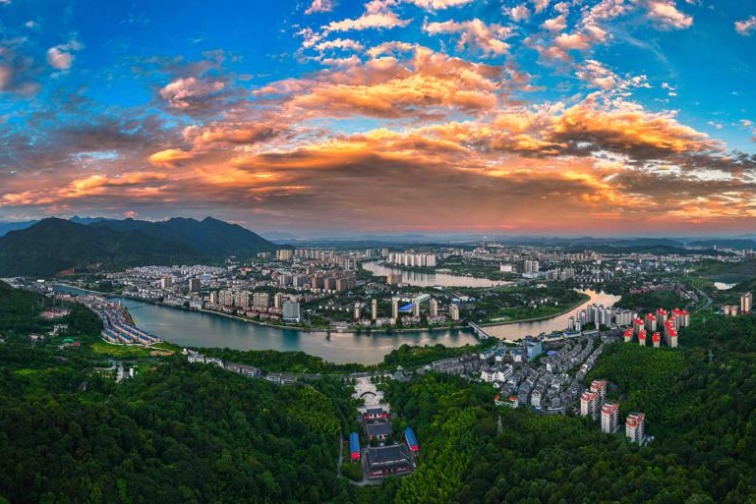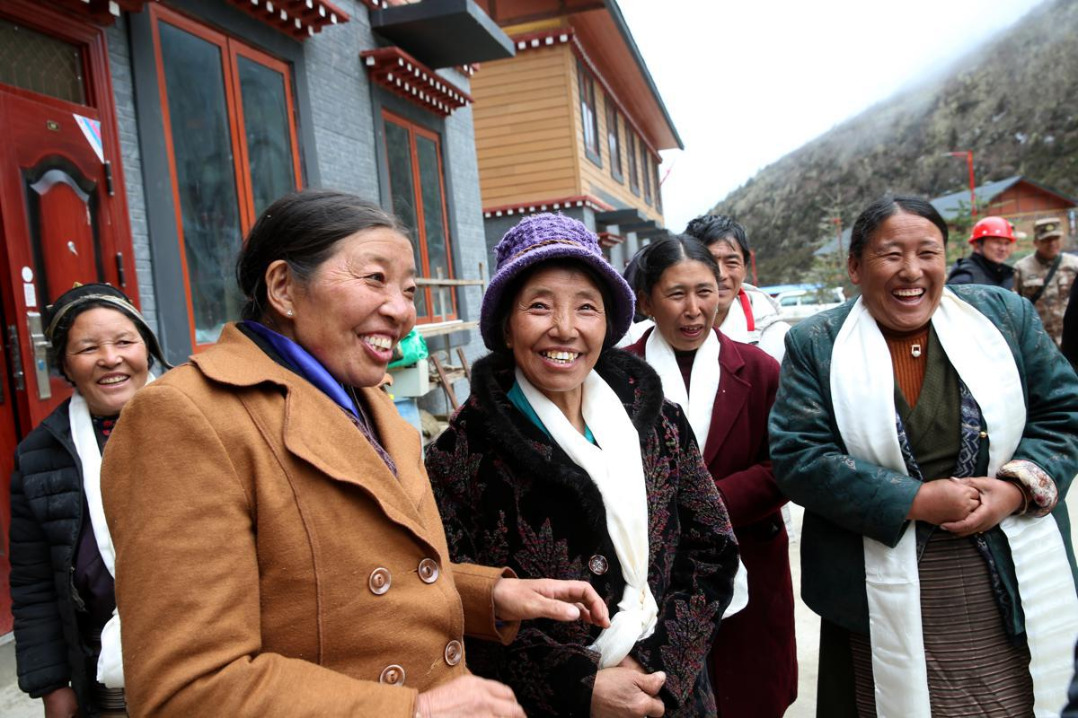Sky's limit for outdoor activity market
Authorities chart path to expand burgeoning consumption potential, foster healthy lifestyles


Outdoor activities are a way of life for millions of Chinese people, expanding beyond simple leisure into fitness, culture and socializing.
Last year, the country's online sales related to outdoor sports hit 300 billion yuan ($41.8 billion), according to the outdoor sports online consumption development report released by Beijing Sport University's School of Leisure Sports and Tourism, and a research institute of e-commerce platform Meituan.
Recognizing the immense economic potential behind these figures, authorities have moved to provide clearer direction for development in the sector.
In late July, the General Administration of Sport and the National Development and Reform Commission released a guideline for creating high-quality outdoor sports destinations, aiming to foster healthier lifestyles, expand tourism and generate economic growth momentum.
The guideline, which is being put under trial, covers specialized sports facilities, supporting infrastructure and services, with central funding prioritizing projects that meet high environmental and safety standards.
The guideline stresses that specialized sports facilities should tap into local geography, such as mountains, rivers and lakes, and be eco-friendly and safe.
Support facilities, such as campsites, docks and spectator areas, should meet all needs, and service and safety infrastructure, including way stations, signage systems, rescue facilities and access roads, has to be in place to enhance both safety and visitor experience, the guideline said.
It emphasized that regions prioritizing water sports can develop marinas and boathouses to store vessels and equipment, provide repair and docking services, and support functions such as supply, safety and rescue.
Support will be given to local efforts to plan and build emergency rescue facilities for high-risk sports with stringent safety requirements, such as alpine skiing, diving, mountaineering and rock climbing.
Regions with the necessary conditions and demand may establish outdoor sports rescue stations that integrate early warning, rescue and medical functions, the guideline said.
The interconnection of sports venues with existing road networks is encouraged, including the construction of connecting roads not exceeding 10 kilometers in length.
The guideline follows the National Development and Reform Commission's earlier guiding opinions about developing such destinations in January.
Wei Guoxue, a researcher at the Chinese Academy of Macroeconomic Research of the National Development and Reform Commission, said China has ample room to grow in this area, with abundant outdoor sports resources, ranging from ice and snow to mountains, water, land, and even aviation.
With the successive release of the national Outdoor Sports Industry Development Plan (2022-25) and the Action Plan to Promote the Construction of Outdoor Sports Facilities and Service Enhancement (2023-25), infrastructure such as fitness trails, ice and snow venues, and campsites is being rapidly improved, while sporting events are becoming increasingly diverse, Wei said.
"Outdoor sports are powerfully driving the growth of related sectors such as cultural tourism, equipment manufacturing and hospitality, while strengthening support for national strategies including public fitness, domestic demand expansion and rural vitalization," he said.
"Building high-quality destinations will further guide the development of the outdoor sports industry and foster new drivers of economic growth," he added.
The guideline makes it clear that outdoor sports facility projects must prioritize ecological protection.
Construction may only proceed if it does not disrupt natural ecosystems, undermine water security, or threaten biodiversity. Waste must be properly managed, and every effort should be made to minimize environmental impact.
Site selection and layout should be carefully planned within designated development zones, taking into account outdoor sports resources, transportation access and local environmental conditions. Projects should integrate with surrounding natural and urban spaces, avoid disaster-prone and ecologically sensitive areas, and undergo rigorous feasibility and environmental assessments before construction.
The scale and costs of projects must also be strictly controlled. Facilities should be practical, efficient and consistent with the carrying capacity of local ecosystems and infrastructure. Overexpansion, duplication and unnecessary artificial landscaping are prohibited, as are vanity projects that waste resources without meeting actual needs.
The guideline also encourages innovative management models. Government leadership should be complemented by social and market participation, with integrated planning, design, construction and operations. New business formats and service models are welcomed, provided they ensure sustainability and reinvestment in maintenance, while always upholding the highest safety standards.
Li Chao, deputy director of the commission's policy research office, said that the recent popularity of the Jiangsu Football City League, an amateur football league in Jiangsu province, reflects the public's enthusiasm and growing demand for diverse, community-based sports events and fitness activities.
It highlights the enormous potential for development in China's sports events, cultural tourism and related industries, Li said.
According to the National Development and Reform Commission, China aims to establish some 100 high-quality outdoor sports destinations by 2030, focusing on ice-snow, water and mountain sports. These hubs will serve as growth drivers for the sports economy and rural vitalization, while also contributing to public health and global recognition of China's outdoor sports industry.
Experts believe the move will lower barriers to participation and attract more people to outdoor fitness.
Guo Jianjun, a professor of sports and medicine integrative innovation at Capital University of Physical Education and Sports, said the development of high-quality outdoor sports destinations can provide a wide variety of benefits.
"High-standard facilities and beautiful environments lower the barriers to participation, thereby attracting more people to engage in outdoor sports," Guo said.
Wang Yuxiong, a professor at the China Center for Sport Industry Development Research at Central University of Finance and Economics, said that after a period of rapid development, the focus on creating a batch of high-quality outdoor sports destinations with international influence is of great significance.
It helps consolidate the achievements of China's outdoor sports industry, explore the operational patterns of the sector, and further advance reforms in its institutional and governance mechanisms, Wang said.
By establishing a large number of well-operated high-quality outdoor sports destinations, not only can the scale of China's outdoor sports industry be effectively expanded, but it also becomes a natural step toward enhancing the global influence of China's outdoor sports sector, he added.
The guide also emphasizes careful planning and deployment, requiring projects to be designed according to local resources, regional characteristics and development capacity. Funding requests should be accurate, avoiding inflated investment claims or arbitrary reductions in project scope.
During construction, all legal procedures, including planning, design, land use, and environmental and flood assessments, must be followed. Authorities are tasked with comprehensive supervision.
Full records of the construction process should be maintained to guarantee transparency and accountability, the guideline said.
yangfeiyue@chinadaily.com.cn





































